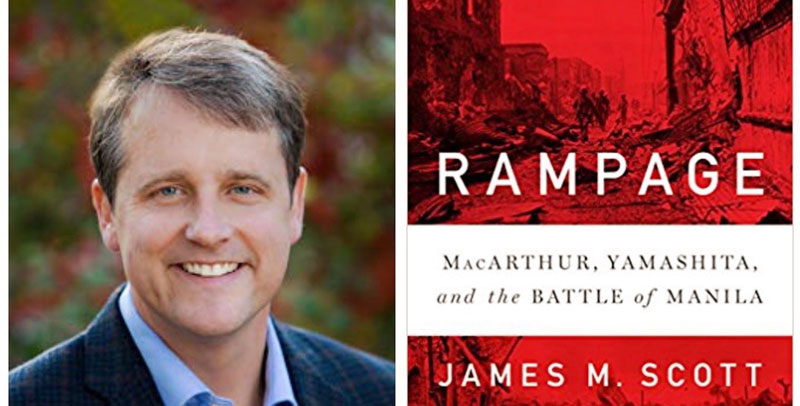War and remembrance

For Filipinos, February is or should be a month of remembering, beyond the commercial confections of Valentine’s Day.
For people somewhat younger than me, February should recall the euphoria of EDSA 1986, and the forced departure of a dictatorship. For myself, the month marks the anniversary of the 1971 Diliman Commune, when we barricaded the university in symbolic resistance to what soon became the martial-law regime. For my parents’ generation, however, February can only mean the closure of the War in 1945, culminating in the bloody Battle of Manila that may have crushed the Japanese but also left 100,000 Filipinos dead in the most horrible ways and Manila thoroughly devastated.
Having been born nearly a decade after that war, I can only look back on it with both relief and, I must confess, morbid fascination, that curious wondering about what I might have done — or even if I would have survived — had I gone through that ordeal. I’ve written plays about the war, read as many books as I could, and visited war memorials, but never seem to have come around to answering how and why war can bring out both the best and the worst in us, sadly more often the latter.
This was much on my mind last week when I attended a lecture at the Ayala Museum by the American author James M. Scott, who was in town to promote his newest book, Rampage: MacArthur, Yamashita, and the Battle of Manila (New York: W. W. Norton, 2018, 635 pp.). James had actually been introduced to me by email before his visit by mutual friends, so I was doubly interested in meeting the war historian, whose earlier book Target Tokyo: Jimmy Doolittle and the Raid That Avenged Pearl Harbor was a 2016 Pulitzer Prize finalist.
Before a packed crowd that included survivors of the war, James brought the audience back to a time when Manila was indeed the Pearl of the Orient and Asia’s most beautiful city, with wide, tree-lined boulevards and a cosmopolitan culture to complement its charms. The war would change all that, over a few dark years of death, suffering and famine. Despite putting up their bravest front, the city’s residents and the thousands of foreigners interned at Sto. Tomas were in desperate need of food, medicines, and, of course, freedom when the Americans — led by the famous but also famously flawed Gen. Douglas MacArthur — landed in Lingayen Gulf and rolled into Manila. In command of the Japanese defenders, Gen. Tomoyuki Yamashita, the so-called Tiger of Malaya, had ordered Rear Adm. Sanji Iwabuchi to withdraw his forces — an order that Iwabuchi, a once-disgraced officer in need of redemption, had no intention of following (records would later show that the Japanese had made no plans for escape).

The stage was set for one of the most hard-fought and destructive battles of World War II. Instead of withdrawing, Iwabuchi directed his men to hold off the Americans with their guns, their swords, and if necessary their teeth. As the fight moved block by block south of the Pasig, the Japanese turned their retreat into wholesale slaughter; 200 Filipino men were beheaded in one house, women were raped scores of times at the Bayview Hotel, and babies were bayoneted; 41 victims were massacred in La Salle, many at the marble altar. Facing certain defeat, many Japanese committed ritual suicide — 77 of them in one place over one night, with singing preceding the explosion of grenades. Iwabuchi slit his own belly. After 29 murderous days, the battle ended. Yamashita, who could have stopped his subordinate had he truly wanted to, was later tried and executed.
More than 16,000 Japanese soldiers died in the battle, against only about 1,000 Americans. (Contrary to popular belief, Korean conscripts did not figure in the massacres, says Scott.) MacArthur would lament the loss of his family’s Civil War memorabilia and his son’s baby book in his Manila Hotel suite. But as Scott emphasizes, Filipino families paid the dearest price, with over 100,000 civilians dead in one month.
Drawing largely on first-person testimonies recorded soon after the events, the book is a searing account of the horrors of war; it was, says Scott, less a battlefield than a crime scene. A friend who read it told me she had to stop every once in a while to gather herself through her tears. The book takes note of subsequent judgments that the Americans bore as much responsibility for the destruction of Manila as did the Japanese, with their sustained bombardments of entrenched positions, but it’s the persistence of humanity — sustained by such organizations of war survivors as Memorare — that ultimately prevails.
Apart from many private acts of remorse, the Japanese government never formally apologized for their soldiers’ atrocities, and our own government’s recent removal of the comfort women’s statue shows how modern politics can obliterate the past better than a howitzer.
Such is the nature of today’s society — and of a generation obsessed with the present and the future — that many Filipinos can barely remember what happened five years ago, let alone 50, or 70. For some reason, our memories of conflict seem especially faint and fragile. Denial seems easier, revisionism even more attractive, so the despots who sent hundreds if not thousands to their graves and robbed us blind continue to live in mansions and be driven around in armored SUVs.
Meanwhile, we have James Scott’s anguished prose to ponder; I myself fear that if we disregard our liberties, the next Battle of Manila, we might inflict upon ourselves.
* * *
Email me at jose@dalisay.ph and visit my blog at www.penmanila.ph.



















